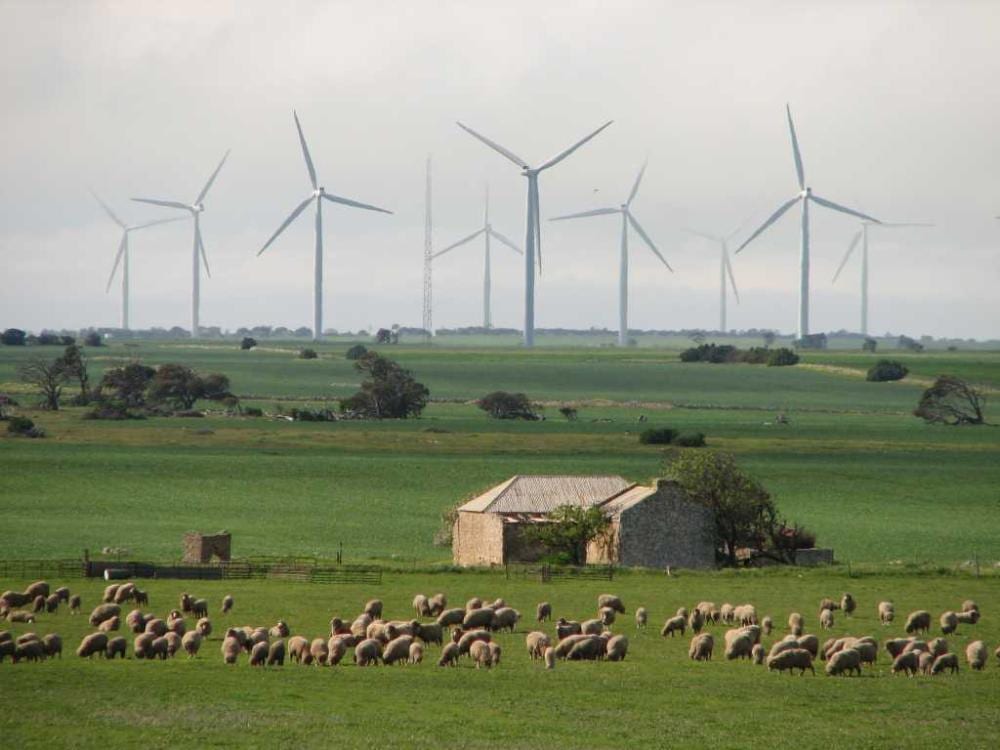
The Australian Renewable Energy Agency says it is providing $12 million towards the $30 million cost of a major battery storage installation to be located on the Yorke Peninsula in South Australia and create a renewables-based mini-grid with the nearby Wattle Point wind farm.
The 30MW/8MWh large scale battery will deliver both network services and market services, and is the result of a lengthy study begun in 2014 called ESCRI (Energy Storage for Commercial Renewable Integration) by local grid operator ElectraNet, Worley Parsons and AGL.
It is designed principally to provide fast frequency response and help balance the local network, but it will also help reduce congestion on the Heywood interconnector with Victoria, because its placement means more power can be transported over the line. This should relieve constraints imposed by the market operator.
It will also have the ability to “island” the local network – pairing with the local 90MW Wattle Point wind farm and local rooftop solar PV as a local micro-grid to ensure grid security and so keep the lights on in case the network failures elsewhere in the state.
The battery is due to be in operation by February, 2018, adding to the Tesla big battery which is due to be in place by December 1, along with up to 100MW of demand response, and emergency back-up generators.
ARENA CEO Ivor Frischknecht says having a series of mini-grids across the state would help ensure grid security. If more were added, “it means over the longer term that state wide blackouts will be a thing of the past,” he told Reneweconomy.
Indeed, AGL – which will operate the battery – said last year after the state-wide blackout that renewable-based micro-grids were the best way to ensure grid security.
“If you have a system that was distributed – and didn’t have large transmission lines – you would have a more secure system,” CEO Andy Vesey said at the time. “That is a very reliable system – and you can only get there with renewable energy.”
The ESCRI study received expressions of interest from 42 international parties, and 17 formal proposals, including technologies such as lithium-ion, sodium-sulphur and advanced lead acid batteries; molten salt heat storage; hydrogen generation and storage; and a number of different flow batteries.
Project sizes ranged from 10-20MW and 20MWh to 200MWh, but as we reported last year, the 30MW/8MWh configuration was found to be the most useful for that location.
Wattle Point and the nearby Dalrymple sub-station was chosen because it is a kind of microcosm of the state’s grid.
It’s at the end of the network, it has large penetration of renewables, and there is a possibility of it being “islanded” – meaning that it will rely on local resources, including battery storage, to keep the lights on should the rest of the network go down.
The final investment decision was announced by federal energy and environment minister Josh Frydenberg, who only last month was mocking the South Australian decision to contract Tesla and Neoen to build a 100MW/129MWh battery near the Hornsdale wind farm, saying it was too small to have an impact.
He said at the time that the Tesla battery could only store 1 per cent of the state’s wind output. But that is not the primary role of either of the two batteries – because both will provide the essential services to keep the lights on in case of a major disruption, such as a network fault or gas plant failure.
“The Turnbull Government’s investment in innovative technologies, such as this large-scale battery, will help to deliver affordable and reliable energy as we transition to a lower emissions future,” Frydenberg said in a statement.
He described it as the battery to be designed, built and commercially operated in Australia and backed by private investment from energy providers.
The irony was not lost on state energy minister Tom Koutsantonis, who said it was bizarre that the federal government had mocked the Tesla battery but was now boasting about an installation one third the size.
Frischknecht said the batteries would also show they can aggregate and “value stack” multiple revenue streams and deliver both regulated network services and competitive market services, thereby encouraging other energy developers to enter the market with battery projects.
“It may not be the biggest battery in the world, but pound-for-pound it will pack a big punch in demonstrating how utility scale storage can contribute to a stronger South Australian energy network,” he said.
Transmission network operator ElectraNet will design, build and own the battery – and operate some of the network services – and lease out the commercial operation (FCAS and energy trading) to AGL.
AGL is also installing 1,000 small-scale battery storage units in Adelaide to create a 5MW “virtual power plant” that will also add to grid security.








